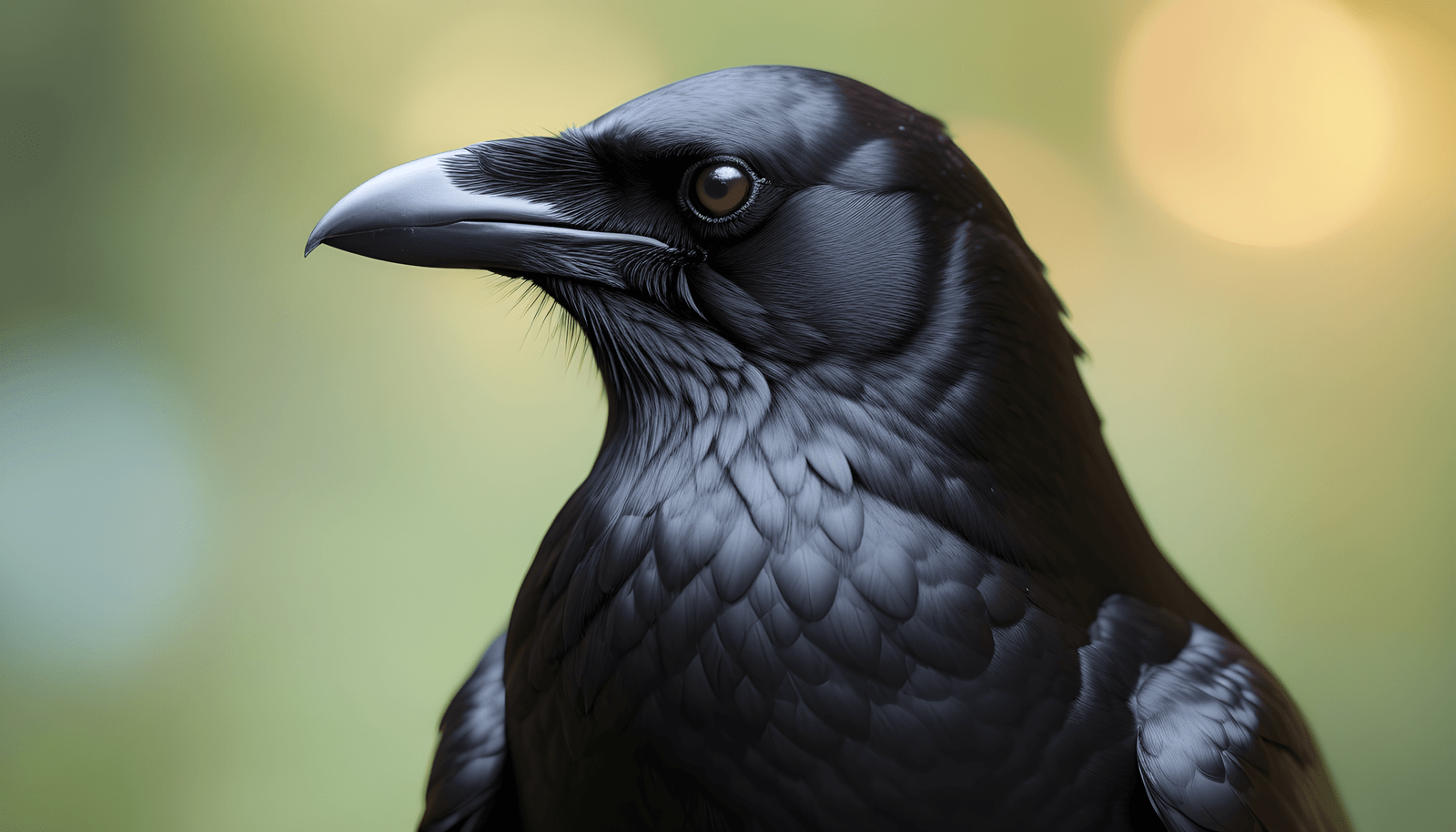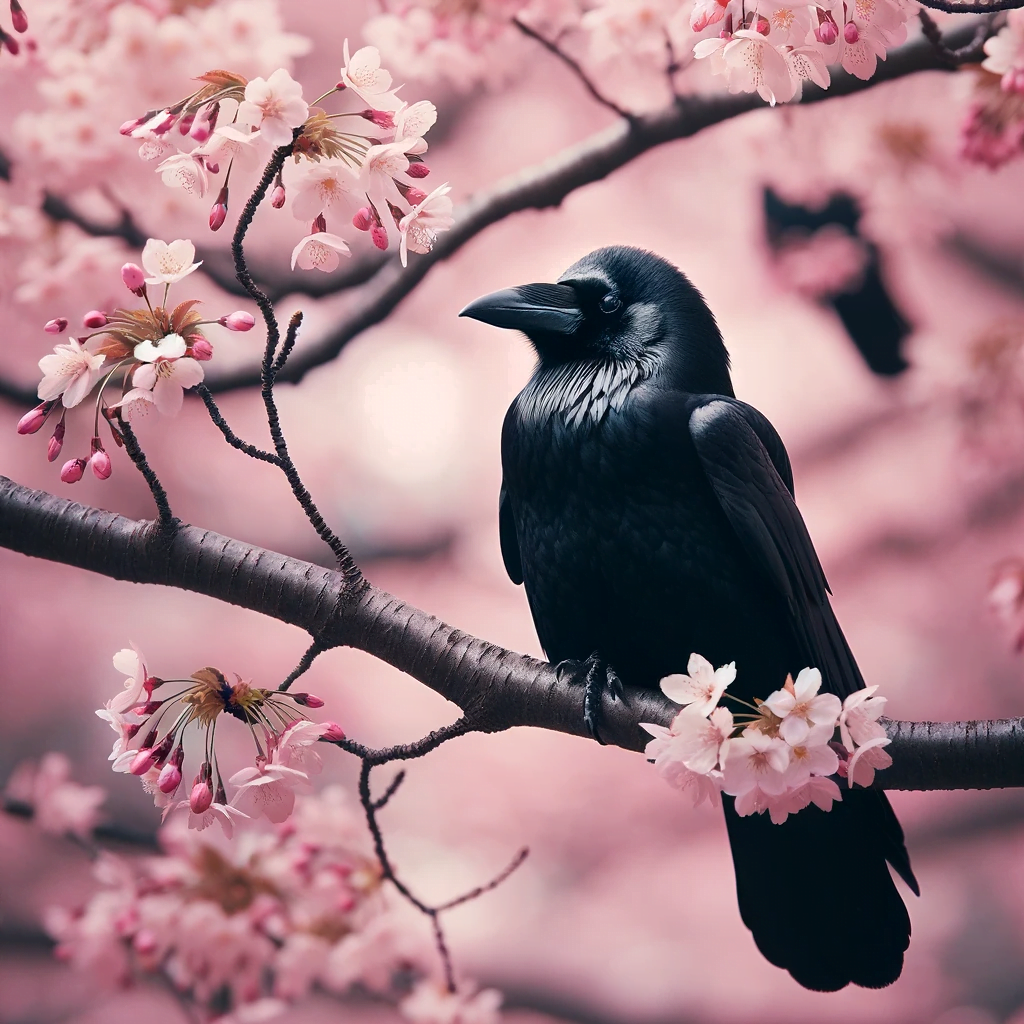Untangling the Tale: The Long-Billed Crow of the Northern Moluccas, Indonesia
December 29, 2023 | by BlackCrow.com

Introduction to the Long-Billed Crow
The Long-Billed Crow, scientifically known as Corvus validus Bonaparte, 1850, is a fascinating bird species found in the Northern Moluccas, Indonesia. In this section, we will provide an overview of this unique crow species, including its habitat and distribution.
Overview of the Long-Billed Crow Species
The Long-Billed Crow is a member of the Corvidae family, which includes various species of crows, ravens, and jays. This particular species is known for its distinctive long bill, which sets it apart from other crow species. The Long-Billed Crow exhibits a glossy black plumage and possesses a sharp, curved bill that measures longer than that of other crow species.
These birds are endemic to the Northern Moluccas, a region consisting of a chain of islands in Indonesia. They are specifically found in the islands of Halmahera, Bacan, and Morotai. The Long-Billed Crow primarily inhabits forested areas, including lowland rainforests, secondary forests, and plantations. They are well-adapted to these environments, displaying unique characteristics and behaviors that aid in their survival.
Habitat and Distribution
The Long-Billed Crow is native to the Northern Moluccas, an archipelago located in eastern Indonesia. Within this region, they are primarily found on the islands of Halmahera, Bacan, and Morotai. These islands offer a diverse range of habitats, including dense forests and agricultural areas, which provide the Long-Billed Crow with ample resources for survival.
While the Long-Billed Crow’s distribution is limited to the Northern Moluccas, they are known to have a relatively large range within this area. However, specific population estimates are not readily available. Ongoing research and conservation efforts aim to gather more information on their population size and distribution to better understand and protect this unique crow species.
Understanding the habitat and distribution of the Long-Billed Crow is crucial for conservation efforts and ensuring the long-term survival of this species. By studying their behavior, habitat requirements, and population dynamics, researchers and conservationists can develop effective strategies to protect and preserve the Long-Billed Crow in its natural environment.
Physical Characteristics
The Long-Billed Crow, scientifically known as Corvus validus Bonaparte, 1850, is a remarkable bird species found in the Northern Moluccas, Indonesia. This section will provide a description of the Long-Billed Crow’s physical characteristics, as well as highlight some of its notable features and adaptations.
Description of the Long-Billed Crow
The Long-Billed Crow is a medium-sized bird with a distinctive appearance. It measures approximately 45 to 50 centimeters (18 to 20 inches) in length and weighs around 350 to 500 grams (12 to 18 ounces). The plumage of the Long-Billed Crow is predominantly black, with a glossy sheen that adds to its allure.
One of the most striking features of the Long-Billed Crow is its long, slender bill. The bill is black and slightly curved, measuring about 6 to 7 centimeters (2.4 to 2.8 inches) in length. This elongated bill is well adapted for foraging and extracting food from crevices and cracks.
The Long-Billed Crow has a robust body with a strong build. Its wings are broad and rounded, enabling agile flight and maneuverability. The tail is square-shaped and relatively short compared to other crow species.
Notable Features and Adaptations
The Long-Billed Crow possesses several notable features and adaptations that contribute to its survival in its natural habitat. One of these adaptations is its intelligence. Crows, including the Long-Billed Crow, are known for their high cognitive abilities, problem-solving skills, and innovative behaviors.
Another remarkable adaptation of the Long-Billed Crow is its vocal repertoire. These birds have a wide range of vocalizations, including a variety of calls, caws, and croaks. Vocalizations play a crucial role in communication within the crow community, helping to establish territories, warn of potential threats, and coordinate group activities.
In terms of feeding adaptations, the Long-Billed Crow’s long and slender bill is well-suited for probing and extracting prey. It allows the bird to reach into narrow crevices and extract insects, invertebrates, and other small prey items. The bill’s shape and length also aid in obtaining food from a variety of sources, making the Long-Billed Crow a versatile forager.
The Long-Billed Crow’s plumage is another adaptation worth mentioning. The dark black coloration of its feathers provides effective camouflage, allowing it to blend in with its surroundings and remain inconspicuous. This coloration is particularly advantageous when the crow is foraging or seeking shelter from predators.
Understanding the physical characteristics, notable features, and adaptations of the Long-Billed Crow provides valuable insights into the fascinating nature of this bird species. As we delve further into its behavior and ecology, we will uncover more intriguing aspects of the Long-Billed Crow’s life in the Northern Moluccas, Indonesia.
Behavior and Ecology
The long-billed crow of the Northern Moluccas, Indonesia, exhibits fascinating behaviors and has unique ecological adaptations that contribute to its survival in its specific habitat.
Social Structure and Communication
Long-billed crows are highly social birds that form small to large groups known as flocks. These flocks can consist of several individuals and often include both adults and juveniles. Within the flock, individuals engage in various social interactions such as grooming, vocalizations, and cooperative feeding.
Communication among long-billed crows is intricate and involves a range of vocalizations. They have a repertoire of calls that serve different purposes, including alarm calls to alert others of potential threats, contact calls to maintain group cohesion, and territorial calls to defend their nesting and foraging areas.
Feeding Habits and Diet
Long-billed crows are omnivorous birds, displaying a diverse diet that allows them to adapt to different food sources within their habitat. Their diet primarily consists of fruits, seeds, insects, small vertebrates, and carrion. They are opportunist feeders, taking advantage of available food resources in their environment.
Long-billed crows are known for their remarkable foraging techniques. They use their long bills to probe the ground and tree crevices in search of insects, grubs, and other small prey. They also have the ability to use tools, such as sticks or twigs, to extract food from hard-to-reach places. This behavior showcases their intelligence and adaptability in obtaining food.
To better understand the behavior and ecology of the long-billed crow, it’s important to consider its social structure, communication patterns, and feeding habits. These factors contribute to the survival and success of this species in the unique ecosystem of the Northern Moluccas, Indonesia.
Conservation Status
The long-billed crow (Corvus validus Bonaparte, 1850) is a crow species found in the Northern Moluccas, Indonesia. Despite its limited range, this species faces several threats that impact its conservation status. Understanding these threats is crucial for implementing effective conservation efforts.
Threats to the Long-Billed Crow
The long-billed crow is currently classified as Vulnerable by the International Union for Conservation of Nature (IUCN). This designation is primarily due to the following threats:
- Habitat Loss: The destruction and fragmentation of the long-billed crow’s habitat pose a significant threat to its survival. Deforestation, primarily for agriculture or logging purposes, reduces the available nesting sites and food sources for these birds.
- Hunting and Trapping: Illegal hunting and trapping activities further contribute to the decline of the long-billed crow population. These birds are often targeted for their feathers, which are used in traditional ceremonies, and for the pet trade.
- Invasive Species: The introduction of invasive species, such as rats and cats, to the long-billed crow’s habitat has had detrimental effects. These invasive predators prey upon the crows and their eggs, leading to population declines.
- Climate Change: Climate change poses an indirect threat to the long-billed crow by altering its habitat and disrupting ecological processes. Changes in temperature, rainfall patterns, and sea levels can impact the availability of food resources and nesting sites.
Conservation Efforts and Initiatives
Efforts are being made to conserve the long-billed crow and mitigate the threats it faces. Some key conservation initiatives include:
- Protected Areas: Establishing and effectively managing protected areas within the range of the long-billed crow is crucial for its conservation. These protected areas provide a safe haven for the birds, ensuring the preservation of their habitat.
- Community Engagement: Engaging local communities in conservation initiatives is essential for the success of long-term protection efforts. Encouraging sustainable land-use practices, raising awareness about the importance of conserving the long-billed crow, and involving communities in monitoring and research activities can contribute to its conservation.
- Law Enforcement: Strengthening law enforcement measures to combat illegal hunting, trapping, and trade of the long-billed crow is vital. Strict enforcement of regulations and penalties can help deter these activities and protect the species.
- Research and Monitoring: Conducting scientific research and monitoring programs can provide valuable insights into the behavior, ecology, and population dynamics of the long-billed crow. This information is essential for developing effective conservation strategies.
By addressing these threats and implementing conservation initiatives, we can strive to protect the long-billed crow and ensure its survival for future generations. It is crucial to recognize the importance of conserving not only iconic and well-known species but also lesser-known species like the long-billed crow in order to maintain the overall biodiversity of our planet.
Interesting Facts and Trivia
Unraveling the mysteries of the long-billed crow of the Northern Moluccas, Indonesia reveals some fascinating facts and intriguing folklore surrounding this unique bird.
Unique Traits and Behaviors
The long-billed crow, scientifically known as Corvus validus Bonaparte, 1850, possesses several distinctive traits and behaviors that set it apart from other crow species. Here are some interesting facts about this remarkable bird:
- Endemic to the Northern Moluccas: The long-billed crow is native to the Northern Moluccas region of Indonesia, making it a special and localized species.
- Impressive Long Bill: As the name suggests, this crow exhibits a disproportionately long bill compared to other crow species. The elongated bill allows it to access food sources that may be otherwise inaccessible to other birds.
- Dietary Adaptations: The long-billed crow has adapted to its environment by developing unique feeding habits. It primarily feeds on fruits, nectar, and insects, showcasing its versatility as an opportunistic feeder.
- Vocal Communication: Like other crows, the long-billed crow is known for its complex vocalizations. It uses various calls and vocal signals to communicate within its social group, conveying messages of warning, aggression, and cooperation.
Cultural Significance and Folklore
Throughout history, crows have held symbolic and cultural significance in different societies. The long-billed crow is no exception. Here are some examples of cultural significance and folklore associated with this fascinating bird:
- Local Legends and Myths: In the folklore of the Moluccas, the long-billed crow often appears as a character in local legends and myths. These stories often depict the crow as a wise and cunning creature, possessing supernatural powers.
- Symbol of Intelligence: Crows, including the long-billed crow, are commonly associated with intelligence and cleverness in many cultures. They are often portrayed as symbols of wisdom and knowledge.
- Spiritual Beliefs: In some indigenous cultures of the Moluccas, the long-billed crow is believed to have spiritual significance.
- Cultural Art and Crafts: The long-billed crow has also inspired artistic expressions in the form of traditional crafts and artwork. It can be found depicted in paintings, sculptures, and other forms of indigenous art, showcasing its cultural importance.
The long-billed crow of the Northern Moluccas, Indonesia, with its unique traits and cultural significance, continues to captivate the imagination of people and researchers alike. Exploring the folklore and cultural connections surrounding this bird adds another layer of appreciation for its presence in the region.
RELATED POSTS
View all


